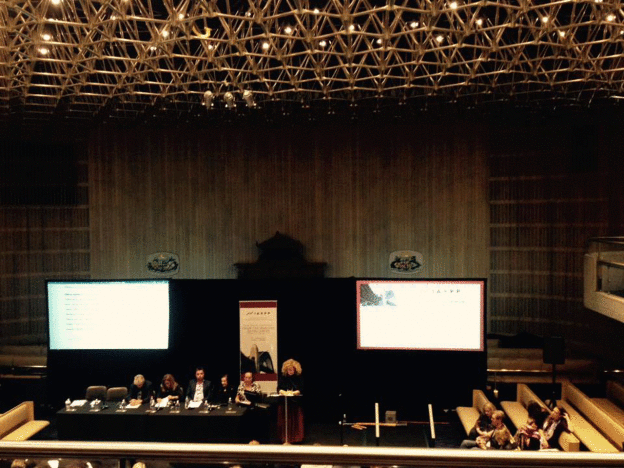Cathy Hicks (Australia) & Sarah Calvert (New Zealand)
Francesca Colzani (Chile)
Koichi Togashi (Japan)
Estelle Shane (USA)
Adriano Bugliani (Italy)
Cynthia Chalker (USA)
Gonçalo Neves (Portugal)
Joyce Slochower (USA)
Steven Kuchuck (USA)
Ann Marie Sacramone (USA)
Sydney 2017: From the Margins to the Centre
by Sarah Calvert (New Zealand) and Cathy Hicks (Australia),
Conference Co-chairs
As the co-chairs of the recent IARPP international conference in Sydney, Australia, it was our pleasure to welcome the many of you who traveled so far (and braved jet lag) as well as old and new friends from our own communities. The conference held a sense of “differences” – differences in sky and sun, differences in perceptions and opinions—and was filled with warmth, conversation, thought-provoking presentations, wonderful music and film, and differing forms of relationality both in thinking and in being.
The conference, with its theme “From the Margins to the Centre,” reminded us of the diversity of voice. Indeed, it was the voice of indigenous peoples who welcomed us, shared with us their stories, and later farewelled us. Other presenters drew on psychoanalytic traditions to consider new ways of working with the marginalized. This was a conference that sought to consider how progress and creativity can thrive when familiar concepts and ideas are seen from new angles. Presenters asked, “What can the familiar bring to the new and what can the new bring to the familiar?”
The multiplicity of dialogue was powerfully reflected in the challenging and thought-provoking plenaries. Some of these saw us thinking about aging and its vicissitudes, while others confronted us with contested spaces, those within each of us and in our patients, as well as in the way space on our planet is contested. We remembered Muriel Dimen in a plenary that acknowledged her work and the powerful thinking she brought to IARPP. The papers, both those that were invited and those accepted from our IARPP community, were equally diverse, and many new and exciting voices were heard and familiar and treasured voices listened to in the different register of “down under.”
This conference featured presenters from 22 countries, and every continent (other than Antarctica) was represented. Such diversity provided those who attended a rich palette of thoughts, ideas, and challenges. We saw that presenters had been invigorated by the conference theme and wove it skillfully into every sort of presentation: individual case presentations, challenges to or explanations of theory, and discussions of the role of our work in the world today.
We have been humbled by the feedback about the impact the conference has had. We believe that Sydney 2017 provided a powerful start to conversations which will continue in New York in 2018 as we contemplate “Hope and Dread.”
Cathy Hicks PhD and Sarah Calvert PhD,
Conference Co-chairs
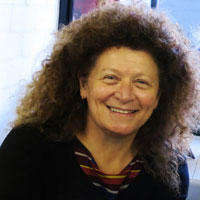 Catherine Hicks PhD
Catherine Hicks PhD
P O Box 1719, Neutral Bay Junction,
NSW 2089, Australia
Email Catherine Hicks also Here
website: www.wycombeclinic.com
 Sarah Calvert, PhD
Sarah Calvert, PhD
1602 18 Beach Rd, Auckland
New Zealand 1010
Email Sarah Calvert
Website: http://millenniumconsulting.co.nz
![]()
Back to Top
Reflections on the Sydney Conference
ByFrancesca Colzani (Chile)
(cliq aquí para el español)
I’m becoming addicted to IARPP international conferences and Sydney was no cure. Quite the opposite. The city, the people, the perfectly organized conference, the potent papers, the Maori, the countless opportunities to meet more colleagues and deepen bonds with those met at previous conferences…all of these were as gratifying and stimulating as it has come to be at our conferences.
But Sydney was special for me in an unexpected way. When the panel I was part of – the invited panel “The Need to Speak Out Against Injustice,” in which we discussed Eva Orner’s documentary “Chasing Asylum” – ended, I felt uneasy. Even though the panel, I thought, went well and we had an interesting and lively discussion, I felt uncomfortable. I wondered why.
One of the panelists, Dr. Peter Young, gave testimony about his experience as Medical Director on Nauru and Manus Island Refugee Camps, where the Australian Government sends all refugees that reach the continent’s shores by boat. I founding myself hoping that someone had had the good idea to record what we had just witnessed.
In a low voice he spoke and described the horrors we all had grasped in the documentary. He also spoke about his decision to quit his position and how threatening it was for anyone daring to speak out about what goes on in the Camps. We talked about how our field could engage in these issues, about making sense in an integrative way that could lead to more understanding and action in our tumultuous world.
Dressed in blue, Dr. Young could have remained unseen had he not been seated up front. His speech was austere, undramatic. He focused on the subject. But it was moving and it widened the frontiers within which we usually speak in our forums.
My uneasiness had to do with this: only those present in that room benefited directly from his presentation. He left quietly and I wished we had recorded his words, but we hadn’t. This was just one panel among many among days and among many years… There’s a song by the Cuban composer and singer Sylvio Rodriguez that goes, “a donde se van las palabras perdidas…/ where do lost words go to…”
So, it was good to be in that room. It was good to talk about it later during coffee breaks. And I realized once again how important it is for us to actually meet, witness, discover, surprise ourselves, feel the likenesses and differences among us, reflect on them… until we meet again, even in spite of the difficulties that we – the ones whose first language is not English – encounter and all the details and subtleties that we inevitably miss.
A healthy addiction, this one. See you in New York.
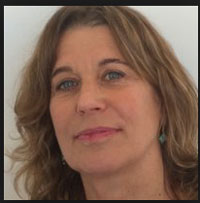 Francesca Colzani
Francesca Colzani
Napoleón 3565, of. 1004,
Las Condes, Santiago Chile
Email: Francesca.colzani@gmail.com
Website: www.francescacolzani.com
![]()
Reflexiones sobre la Conferencia en Sydney
Por Francesca Colzani (Chile)
(click here for English)
Me estoy volviendo adicta a las conferencias internacionales de la IARPP y Sydney no contribuyó precisamente a mi curación. Más bien todo lo contrario. La ciudad, la gente, la conferencia bien organizada, los trabajos potentes, los Maori, las infinitas oportunidades para conocer a más colegas y profundizar los lazos con aquellos ya conocidos en conferencias anteriores… todas estas cosas fueron tan gratificantes y estimulantes como ya se nos ha hecho habitual.
Pero Sydney fue especial para mi de una forma inesperada. Cuando el panel del que yo formaba parte – Invited Panel “The Need to Speak Out Against Injustice”, en el que se discutió el documental “Chasing Asylum” de Eva Orner – terminó, me sentía inquieta. Aunque tenía la impresión de que el panel había estado bueno y habíamos tenido una discusión interesante y animada, me sentía incómoda. Me pregunté porqué.
Uno de los panelistas, el Dr. Peter Young, habló acerca de su experiencia como Director Médico en los Campamentos de Refugiados de las islas Nauru y Manu, donde el Gobierno Australiano envía a todos los refugiados que llegan en bote a la costa del continente. Ojalá, pensé, que alguien haya tenido la buena idea de grabar lo que acabamos de presenciar.
Habló en voz baja, describiendo los horrores que todos habíamos captado en el documental. También habló de su decisión de renunciar a su cargo y de cuan amenazante se tornaba la situación para cualquiera que quisiera hablar públicamente de lo que sucede en los Campamentos. Hablamos de cómo nuestra disciplina podría involucrarse en estos temas, de cómo hacer sentido hacia una mayor comprensión y acción en forma integrada, en nuestro tumultuoso y complejo mundo actual.
Vestido de azul, el Dr. Young podría haber pasado inadvertido de no haber estado sentado en la testera. Hablaba en forma austera, sin dramatizar. Pero era conmovedor y ampliaba las fronteras de lo que usualmente hablamos en nuestros foros.
Mi incomodidad tenía que ver con esto: solo los que estábamos allí presentes nos beneficiamos directamente de su testimonio. Se fue silenciosamente. Ojalá hubiéramos grabado sus palabras, pero no lo habíamos hecho. Este era solo un panel entre muchos otros entre muchos días entre muchos años… Hay una canción del cantautor cubano Sylvio Rodriguez que dice, “a donde se van las palabras perdidas…”
Así, fue bueno estar en esa sala. Fue bueno hablar sobre el panel en los intermedios tomando café. Y me di cuenta, una vez más, de lo importante que es que nos reunamos en carne y hueso, que seamos testigos, descubramos, nos sorprendamos, sintamos las semejanzas y las diferencias entre nosotros, que reflexionemos sobre ellas… hasta juntarnos de nuevo a pesar de las dificultades que nosotros – aquellos cuya lengua materna no es el inglés – enfrentamos y de los detalles y sutilezas que inevitablemente nos perdemos.
Una adicción sana, esta. Nos vemos en Nueva York.
 Francesca Colzani
Francesca Colzani
Napoleón 3565, of. 1004,
Las Condes, Santiago Chile
Email Francesca Colzani
Website: www.francescacolzani.com
![]()
Back to Top
Society, Culture, History, and Human Evolution
By Koichi Togashi (Japan)
First and foremost, I deeply thank the conference co-chairs, Cathy Hicks and Sarah Calvert, for investing tremendous energy into this rich and stimulating conference in Sydney. The conference theme, “From the Margins to the Centre: Contemporary Relational Perspectives,” reflected our current times and, I believe, achieved solid and substantial success. Throughout the conference—whether it was in workshops, plenary sessions, or individual panel sessions—I found that the conference attendees demonstrated a sensitivity to the fact that all human beings live in diverse communal contexts such as gender, race, religion, country, culture, social class, historical background, culinary traditions, ancestry as colonizer and colonized, political thought, etc. This conference made me recognize that a person who is at the center of one community is indeed in the margins of another community; similarly, a thought coming from the margins of one society may be a central idea in another society.
I was privileged to present my ideas, along with colleagues from Hong Kong and India, in an invited panel session entitled “Culture and Psychoanalysis in Asia,” and in a paper session entitled “Moving Narrative to the Center of Relational Psychoanalysis: A Cross-Cultural Perspective” with friends and colleagues from the United States and Norway. In both panels I enjoyed sharing some differences, similarities, difficulties, and divergences with my co-panelists and of course with the moderators and many audience members too. The discussions in these panels, I believe, successfully illustrated that even ideas at the center of Western psychoanalytic thought have not necessarily been treated as central in the psychoanalytic histories of all countries. Similarly, concepts that evolve in countries at the margins of the psychoanalytic community can, over time, come to occupy a place at the center of psychoanalytic thought.
It is frequent in human history that a movement creates a charismatic hero whose ideas come to be an ideological pillar of the movement. New leaders and ideas, then, can emerge from the margins of one movement and come to be at the center of the next movement. As Kohut emphasizes, generational changes and regional shifts usually emerge through the sublation of dialectic tensions between the edge and the center. This tension between mainstream concepts and innovative ideas is evidence for me of the essential power of human evolution.
I am proud of IARPP, which has been open to multiple dialogues and rich discussion of important concepts not only in psychoanalysis but also in human society, culture, politics, and history, all of which creates a space for our very human and theoretical evolution.
 Koichi Togashi, PhD, LP
Koichi Togashi, PhD, LP
15-8-605 Osuga-cho, Minamki-ku,
Hiroshima-shi, Hiroshima 732-0821 Japan
Email Koichi Togashi
![]()
Back to Top
Reflections on the Sydney Conference
By Estelle Shane (USA)
This was an exceptional conference with panels and papers that seemed to reach, interest, and often emotionally move the entire audience, an unusual but highly desirable experience in an educational setting. And what stands out most clearly for me is the fact that the particular context of the conference—that it took place in Australia—was always present for the audience as a central feature, either in the background or, most thrillingly, front and center.
With the history of the aboriginal peoples, their traumatic experience, and their capacity to endure presented in panel one, and some of their artistic accomplishments featured in panel six, this focus on the aboriginals was arguably the most extraordinary feature of the conference, matched only by the kind and welcoming attitude that always prevailed. It was startling to learn even before the conference began that the aboriginals constitute the oldest living continuous culture in the history of the world. My appreciation for this invulnerable people was greatly enhanced by meeting them face to face in this unusual IARPP program.
Of course I do not mean to minimize the scientific panels and papers that were presented. Rather than single any of them out for special mention let me say that everything I had the opportunity to participate in struck me as eminently worth attending, even though I did so at the cost of discovering even more of the charms of Sydney and the surround. This is high praise. Perhaps this is only because it is the last conference I have attended, but I do think it achieved a high point of cultural and scientific learning.
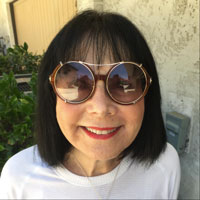 Estelle Shane, PhD
Estelle Shane, PhD
1800 Fairburn Ave., Suite 201
Los Angeles, CA 90025 USA
Email: estelleshane@icloud.com
![]()
Back to Top
Reflections on the Sydney Conference
By Adriano Bugliani (Italy)
I joined IARPP very recently, not even two years ago, and have been curious about why I have been so actively attending every colloquium, most webinars, and each conference so far. Before the trip to Sydney, my longest flight had been 1.5 hours. I had never even been out of Europe. Part of why I decided to travel to this conference is that I have a great friend in Sydney, an IARPP mate I met in my first colloquium. So I had to meet her flesh and bones. But it’s more than that.
I’m still wondering about the overall frame of my (our) job. My everyday practice with clients is an increasingly integrative craft accompanied by the constant feeling that I’m missing some comprehensive meaning. But I have the feeling that by meeting colleagues again and again I may somehow grasp the meaning of the therapeutic commitment.
In Sydney, although I valued attending the conference presentations, even more I still remember the powerful impression made on me by a little talk during a reception with many of you, or just sitting at the same table having dinner. A look, the tone of the voice, a little sentence someone spoke without paying much attention to it. Or maybe even a sentence one would never write in a paper. A hug. That’s the way I learn. I need to match writings with real people.
So IARPP is a kind of huge patisserie—for my selfish hungry drive to understand by means of individuals. But of course meeting colleagues in person represents more than just chances for learning, as they are becoming friends. We make connections across the planet. Some pass through Italy and we meet again in person.
While I’m endlessly chasing the meaning of my work I’m having my community. What began as a self-serving desire is now giving me a sense of real community, one in which I’m less self-centered. It took me 50 years to find what feels like my first “real” community. Having the majority of friends amongst my colleagues feels like a hyper-therapeutic world. Yet these nonetheless are very real relationships—as with clients and family. The rest of the world feels much more conventional in comparison; I sometimes feel like I choke out there.
Given the prevailing email/Skype/chat nature of these relationships—however consistent and intense they are—I need the conferences.
A healthy addiction?
 Adriano Bugliani, PhD
Adriano Bugliani, PhD
Via De’ Serragli, 75
Florence, 50124 Italy
Email Adriano Bugliani
![]()
Back to Top
Reflections on the Sydney Conference
By Cynthia Chalker (USA)
I find that every IARPP conference allows me to broaden my understanding of the history and complexities of relational psychoanalysis and psychotherapy. I enjoy being a part of a professional organization that strives to expand our collective work to include new ways of thinking and practicing, all while experiencing something new in every city in which the conference is held.
My attendance at the most recent IARPP Conference in Sydney, Australia was propelled by the invitation to participate as part of a plenary session. The official opening of the conference was a welcome to Australia by the local organizing committee whose participants spoke of the importance of showing honor and respect to the ancestors and elders of the Aboriginal and Torres Strait peoples, the first inhabitants of this sacred land. I also learned that many Aboriginal and Torres Strait people refer to themselves as black.
This was significant to me in many ways. While writing my paper, “Living and Working from the Centre: Reflections by a Black American Analytically Trained Therapist,” I continually challenged myself to remember that the Black American experience is not universally known or understood. How do I explain myself and my work clearly and succinctly? There is a line from one of favorite poems, “For Each of You,” by Audre Lorde, that speaks to this:
“…Remember
our sun
is not the most noteworthy star
only the nearest.”
During the conference opening, the presenters shared a brief explanation of the cultural norms and expectations and demonstrated the pride of being the founders of that land. This reminded me of what I know to be true: my experience as Black in the United States is not the only story of racial inequality and the fight for social justice in the world. Mine is not the most noteworthy experience. It is just the nearest to me.
Throughout the conference each presentation began by honoring the ancestors and elders of the original people of Australia. Participating in this tradition, I experienced a connection to my own ancestors and elders and those of this profession upon whose stories and traditions we continue to build.
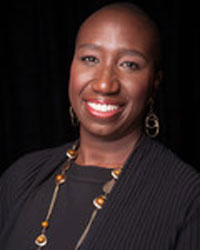 Cynthia Chalker, LMSW
Cynthia Chalker, LMSW
245 East 13th Street
New York, NY 10003 USA
Email Cynthia Chalker
![]()
Back to Top
Reflections on the Sydney Conference
By Gonçalo Neves (Portugal)
(clique aqui para português)
Last June, a unique phenomenon occurred: Australia and New Zealand migrated to the center of the relational world map. The challenge was to bring “the margins” to “the center,” as one might play with a planisphere, folded like an accordion.
Since the conference was based in Sydney, Australia, the history of the Aboriginal people was not silenced. On the contrary, we were invited to think about the other, about difference, and also about the land we were visiting. The issue of discrimination against the Aboriginal people, who have been made peripheral in their own space and prevented from explaining their subjectivity, had a central presence.
It was a great honor for me to be part of such an engaging project and to share a panel presentation on psychosomatics with my fantastic wife, Filipa Canêlo Neves. I presented a paper entitled “An Unlived life: From Mars to Relational Psychosomatics,” in which I explored the thinking of Sami-Ali, a French-Egyptian psychoanalyst based in Paris, and the importance of his ideas in the understanding of psychosomatics.
In my presentation I showed the psychic and the organic variables to be two aspects of the same thing: the relationship. I described an original relationship, one that precedes birth and without primacy of the mind over the body, which is instead a rhythmic interaction, mediated and projected by the body in interaction with the other and the world. This body projection is primarily a dream, an objectification of the subjective. The capacity to dream, to hallucinate, to play, to have illusions, to have affection, is what Sami-Ali (1987/2002) calls the Imaginary Function. This is what allows us to inhabit our land, to animate it, to subjectivate it, and to use it as a vehicle for integration into a socio-cultural system. However, the dream was stolen from the Aboriginal people, a repression of the Imaginary Function that erased difference and promoted the “approval” of the other. When this occurs the subject disappears and the real body remains, which is colonized. For the Aboriginal people, the “Banal” (Sami-Ali, 1980/2002) reigned, which refers to an adaptation that blocks the dream and eventually leads to illness.
Contact with the suffering of the Aboriginal people was placed throughout the conference. I learned about programs that promote cross-cultural understanding, great efforts in promoting indigenous mental health, and the icing on the cake, a performance on the yidaki (didgeridoo) which, I venture to say, made everyone in the audience dream.
Subjectivity and imagination were important themes during the time we shared in Sydney. I cannot speak here of all that I experienced in Sydney, but I do want to emphasize the empathic sensitivity with which differences were addressed, from various angles and sensibilities, be it sexual, cultural, racial, political, or geographical.
My experience at the conference, though, was not just what I have described here. The environment that is lived at IARPP conferences is “circular” instead of colonized, promoting contact with numerous centers that are margins and margins that are centers, these relationships developing among inhabitants of the same world. Sydney was no exception and allowed me to meet and renew ties with colleagues from the most varied “folds” of the planisphere, enriching myself at every moment with their unique visions.
I can only thank the organization, represented by Cathy Hicks and Sarah Calvert, for the exquisite way they treated every detail of this event.
Thank you very much and see you in New York!
References:
Sami-Ali (1980/2002). O Banal. Lisboa: Dinalivro.
Sami-Ali (1987/2002). Pensar o somático: Imaginário e Patologia. Lisboa: ISPA.
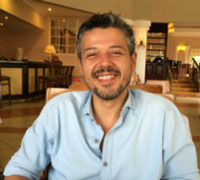 Gonçalo Neves, MCP
Gonçalo Neves, MCP
Lisboa, Portugal
Email Gonçalo Neves
website: www.goncaloneves.pt
Reflexões sobre a Conferência de Sydne
By Gonçalo Neves (Portugal)
(click here for English)
No passado mês de Junho, ocorreu um fenómeno único: a Austrália e a Nova Zelândia migraram para o centro do mapa do mundo Relacional. O desafio era trazer “as margens” para “o centro”, como quem brinca com um planisfério, dobrando como um acordeão.
Tendo a conferência sido sediada em Sydney, Austrália, a história do povo Aborígene não foi silenciada. Pelo contrário, tornou-se um convite para pensar o outro, a diferença, e, também, o território. A questão da discriminação do povo Aborígene, periférico no seu próprio espaço, impedido de explanar a sua subjectividade, teve uma presença central.
Foi para mim uma grande honra fazer parte de um projecto tão aliciante e partilhar uma mesa sobre psicossomática com a minha fantástica mulher, Filipa Canêlo Neves. Coube-me apresentar um papel intitulado “An unlived life: From Mars to Relational Psychosomatics”, no qual explorei o pensamento de Sami-Ali, Psicanalista Franco-Egípcio radicado em Paris, e sua importância para a compreensão da psicossomática.
A proposta é pensar as variáveis psíquicas e as variáveis orgânicas como duas formas de colocar o mesmo problema: a relação. Uma relação original, que antecede o nascimento, sem primazia da mente sobre o corpo, mas sim uma interacção ritmada, mediada e projectada pelo corpo na interacção com o outro e com o mundo. Esta projecção do corpo é, principalmente, o sonho, uma objectivação do subjectivo. A capacidade de sonhar, devanear, alucinar, jogar, ter ilusões, ter afecto, é o que Sami-Ali chama de Função do Imaginário. É isto que nos permite habitar a nossa terra, animá-la, subjectivá-la e usá-la como veículo de integração num sistema sócio-cultural. Foi também o sonho que roubaram ao povo Aborígene. Um recalcamento da Função do Imaginário apaga a diferença e promove a “aprovação” do outro. O sujeito desaparece e fica o corpo real, que é colonizado. Daí em diante impera o Banal, outro termo de Sami-Ali, que se refere a uma adaptação que bloqueia o sonho e, eventualmente, conduz à doença.
O contacto com o sofrimento do povo Aborígene foi sendo “amortecido” ao longo da conferência. Ouvi falar de programas de promoção da compreensão transcultural, de grandes esforços na promoção da saúde mental indígena e, qual cereja no topo do bolo, uma performance com yidaki (didgeridoo) que, arrisco dizer, fez sonhar todos os presentes.
A subjectividade e a imaginação são assuntos maiores, tornando-se alvo de vários olhares e sensibilidades durante todo o tempo que partilhámos em Sydney. Não me é possível falar aqui de tudo o que vi e ouvi, mas quero destacar a potência empática com que a diferença foi acomodada, nos mais variados ângulos e sensibilidades, fosse ela sexual, cultural, racial, politica ou geográfica.
A minha experiência não se resume ao que descrevi. O ambiente que se vive nas conferências IARPP é “circular”, ao invés de colonizado, o que promove o contacto com vários “centros” que são margens e “margens” que são centros. A relação acontece entre habitantes do mesmo mundo. Sydney não foi excepção e permitiu-me conhecer e rever colegas das mais variadas “dobras” do planisfério, enriquecendo-me a cada momento com as suas visões únicas.
Resta-me agradecer à organização, representada por Cathy Hicks e Sarah Calvert, pela forma primorosa como trataram cada pormenor deste evento.
Muito obrigado e vemo-nos em Nova Iorque!
Referências:
Sami-Ali (1980/2002). O Banal. Lisboa: Dinalivro.
Sami-Ali (1987/2002). Pensar o somático: Imaginário e Patologia. Lisboa: ISPA.
 Gonçalo Neves, MCP
Gonçalo Neves, MCP
Lisboa, Portugal
Email Gonçalo Neves
website: www.goncaloneves.pt
![]()
Back to Top
Sydney Conference Reflections
By Joyce Slochower (USA)
There’s something about the encounters one can have at IARPP that linger. As did Australia and New Zealand. OK, New Zealand first (sorry to my Sydney friends). The most spectacular scenery in the world, especially for a hiker like me. Colleagues who are forthright, thoughtful, warm. As were those I met in Sydney. Smart, lively, interested in the other.
In addition to some wonderful panels by colleagues I know, I was stunned and often riveted by the presentations of Australian and New Zealanders who introduced me to political/social issues with which I had only a glancing familiarity. The presentations made me think, moved me (once to tears). Smart, interesting, open people from—literally—all over the world added to both the pleasure and stimulation of the meetings. A warm, relaxed, open gala dinner created opportunities to chat, and for once the music wasn’t too loud!
So here I am now, back in New York, hoping to return. Soon.
 Joyce Slochower, PhD, ABPP
Joyce Slochower, PhD, ABPP
15 West 75th Street, Apt. 8B
New York, NY 10023 USA
Email Joyce Slochower
![]()
Back to Top
Reflections on the Sydney Conference
By Steven Kuchuck (USA)
It is always difficult, if not impossible, for me to separate out the content of a conference from my feelings about the setting and the people. I suppose there is a parallel here to theory, which, when studied outside the context of the participants’ subjectivities and the dyad’s intersubjective dynamics, can be meaningless. Having said that, let me start by praising the conference’s co-chairs, the talented and creative Cathy Hicks and Sarah Calvert from our Australian and New Zealand chapters respectively. Together they created an outstanding program of presentations and panels that achieved the always delicate balance of including popular, established voices, along with newer voices from the field that are also necessary for keeping relational psychoanalysis evolving and vital. If IARPP took a chance on devoting its resources to a location that might prove more difficult for attendees to reach, Cathy, Sarah, their chapter members, and the conference planning committee were more than willing to take on this significant challenge. Reflecting here as both an IARPP Board member and a conference attendee, I believe that they more than achieved their goal of presenting a conference that many of us will remember for a long time to come.
I hesitate to single out any particular content because I learned from all of the presentations I attended. I will say that there was an emphasis on diversity addressed, for example, by inclusion of indigenous people, along with a focus on Otherness that struck me as both relevant and important. I wouldn’t hesitate to describe many of the presentations as truly outstanding. There was one plenary, however, that stood out for me in particular. This was not only because of the quality of its papers and presenters, but also because of the scarcity of writing about this theme despite its great importance, and perhaps also because of my particular interest in the clinician’s subjectivity and a growing personal sensitivity to the topic addressed by this plenary. “Aging and its Vicissitudes” with Lynne Segal, Joyce Slochower, Barbara Pizer, Stuart Pizer, and moderator Estelle Shane, offered an intelligent, thoughtful, touching, and funny contribution to the conference, and was a particularly poignant way to end this remarkable weekend.
In closing, I want to return to my opening thoughts about setting and people. One of the joys of attending an IARPP conference for me—and I know for many of us—is the chance it provides to make new friends and see colleagues and friends one usually only has the opportunity to interact with online. As much learning and gratifying professional collaboration occurs in committee meetings and informal social encounters as occurs when attending the conference presentations. This time in particular I suspect it was a combination of the warmth and appreciation of our Australian and New Zealand hosts, the recreational activities they planned, the chance to meet new conference attendees and members not otherwise seen as regularly at our conferences, and a sense of camaraderie borne of traveling to a part of the world new to most of us, that added to the meaningfulness of this particular conference. I left sated, glad to be returning home yet sad to say goodbye, always a marker for me of an important experience.
 Steven Kuchuck, LCSW
Steven Kuchuck, LCSW
222 West 14th Street, Suite 5M
New York, NY 10011 USA
Email Steven Kuchuck
![]()
Back to Top
The Child, Adolescent, and Parent Psychotherapy Committee Panel:
Margins, Borders, and Meaning in the Family
By Ann Marie Sacramone (USA)
The new IARPP Child, Adolescent, and Parent Psychotherapy Committee presented its inaugural invited panel, “Margins, Borders and Meaning in the Family,” at the IARPP 2017 conference in Sydney. Moderated by María José Mezzera (Chile), in this panel we explored the conference theme of marginalization from a variety of perspectives in psychotherapeutic work with children.
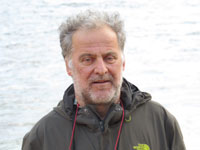
Marco Bernabei
Marco Bernabei (Italy) presented a fascinating and deeply personal account of marginalization within his own family and that of a patient in his paper “On The Margins Of The Parental Couple: An Adolescent Experience.” In his paper he considered the ways in which boys and men come into personal, relational, and work identities through nuances of identification with the father. He also discussed the interplay between this identification and the way in which a young person’s individuation and capacity to imagine the meanings of his own family processes develop.
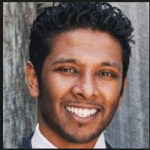
Lux Ratnamohan
Lux Ratnamohan (Australia) and I both explored marginalization in the narratives of children and parents in contexts in which violent political upheaval causes families to be torn apart across geographic borders. In my paper, “Pali’s Journey Toward Integration: An Early Childhood Community Center Psychoanalytic Treatment,” I presented the family story of a grandmother who needed the story of her family to be recorded, preserved, and remembered. Her story was reflected in the community psychoanalytic therapy of a child who redressed and changed how that story was a part of her. In doing so, she changed the narratives of the adults in her family as well.
In his paper “Tigers in the Nursery: How Tamil Refugee Families Talk and Think About the Past,” Lux presented formal research with Tamil families dislocated due to the violence of civil war. He identified three types of narratives within the attachment interviews of the children in these families. These narratives revealed the coping strategies for dealing with the losses and violence of war that each family had experienced. Lux is working on developing a therapeutic approach for these children on the basis of their own culture and these narratives.
Marco, Lux, and the grandmother that I spoke about each told us, with great detail, openness, and humanity, about personal marginalization and loss in the lives of the children in these families. The narratives that Lux and I shared were shaped by the fatal violence and dislocation of war and revolution.
In child psychotherapy, the therapist is present as the development of a child unfolds in the context of difficulty or trauma. The experience occurs in real time, not retrospectively. The child therapist witnesses responses to the past both in the developmental experiences of her child client and in the multiple generations (parents, children, sometimes grandparents, teachers, etc.) that she works with in a single therapy. One is touched by these experiences of course, and, as a relational child therapist, also becomes part of the unfolding narrative. Lux, Marco, and I were deeply affected by the work that we shared.
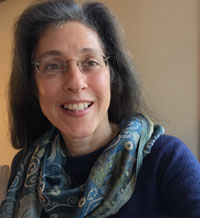 Ann Marie Sacramone MSEd, LP
Ann Marie Sacramone MSEd, LP
26 West 9th St., #9C
New York, NY 10011 USA
Website: https://annmariesacramone.com
Email Ann Marie Sacramone

